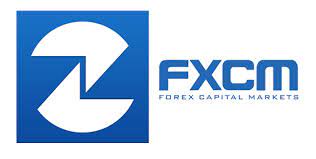
Best Forex Market Technical Analysis Techniques
Forex market technical analysis studies historical currency exchange data to predict future price movements. It helps traders identify potential trends and make informed decisions to maximise profitability.
Technical analysis analyses past market data to forecast future price activities. It focuses on price movements rather than external factors covered by fundamental analysis like economics and politics. Traders use this method to evaluate market conditions and time their trades.
Core Techniques of Forex Market Technical Analysis
These are the core techniques of technical analysis:
Trend Analysis
Traders spot market trends using tools like moving averages and trendlines. A moving average helps smooth out price data over a specific period, making it easier to spot the direction of the price movement. When drawing trendlines, traders connect two or more price points to indicate the slope of the trend.
Trends are usually categorised as uptrends, downtrends, or sideways trends. Continuously higher highs and lows show an uptrend, signalling increasing prices. Lower highs and lows indicate down trends and falling prices. Sideways trends, or range-bound markets, show little movement up or down.
Connect with a global network of finance professionals and find the ideal trading and liquidity partners now!
Support and Resistance Levels
They are key concepts in market analysis representing the price levels at which a currency will likely stop and possibly reverse direction. Support levels are typically below the current price where buying interest is sufficiently strong to overcome selling pressure. Resistance levels are above the current price where selling overwhelms buying forces.
Traders identify where prices have historically reversed or struggled to move beyond to determine these levels. Then they use these levels to make decisions about entry and exit points.
Chart Patterns
Common chart patterns include triangles, head and shoulders, and double tops/bottoms. These formations help traders anticipate potential price movements.
Triangles signal a continuation or reversal depending on the breakout direction. Head and shoulders are typically reversal patterns suggesting a potential sell-off after the pattern completes. Double tops and bottoms signal momentum shifts. They are viewed as reversal patterns. Traders use these patterns to forecast potential trend reversals or continuations.
Technical Indicators
The key technical indicators that help traders to track and predict the market are as follows:
Trend-Following Indicators
Trend-following indicators like the Moving Average Convergence Divergence (MACD) help identify market trends. The MACD uses two moving averages, generally the 26-day and 12-day, and measures the difference between them. A signal line (9-day moving average of the MACD) points buy and sell signals based on where the MACD line crosses the signal line.
Oscillators
RSI and Stochastics are oscillators that identify overbought or oversold market conditions. The RSI measures the speed and change of price movements on a scale of 0 to 100. If readings are above 70, it is an overbought condition. And if readings are below 30, it is an oversold state.
Advanced Technical Analysis Tools
These are advanced technical analysis tools for seasoned traders:
Elliott Wave Theory
The Elliott Wave Theory proposes that markets move in repetitive cycles or waves. Investor psychology influences these waves and cycles. Waves are split into motive phases and corrective phases. Traders use these patterns to predict price movements and identify trading opportunities.
Fibonacci Tools
Fibonacci levels come from the Fibonacci sequence, where each number is the sum of the two preceding ones. These levels help identify potential support and resistance levels. Common Fibonacci retracement levels (23.6%, 38.2%, 50%, 61.8%, and 76.4%) suggest where prices might pause or reverse.
Conclusion
Technical analysis provides advanced tools to assess market conditions and make informed decisions. Successfully navigating the Forex market requires continuous learning and application of these techniques.
Contact us now and promote your business with us!
Follow us on LinkedIn to get daily financial updates!






